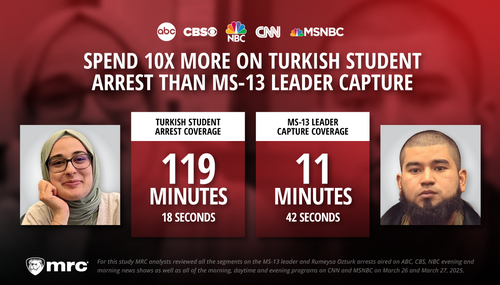 Well, at least they covered it. That’s the best that can be said about the New York Times story by Vivian Yee on the front of Wednesday’s Metro section about a racial hate-crime hoax at the University of Albany: “Racism Allegations, and Their Unraveling, Upset a College Campus.” Three black female students who initially blamed "white men" for racial attacks on a bus were instead charged themselves with misdemeanor assault against a white woman. But Yee did her defensive best to make it still somehow the fault of whites and conservatives and to lament the missed opportunity for racial enlightenment.
Well, at least they covered it. That’s the best that can be said about the New York Times story by Vivian Yee on the front of Wednesday’s Metro section about a racial hate-crime hoax at the University of Albany: “Racism Allegations, and Their Unraveling, Upset a College Campus.” Three black female students who initially blamed "white men" for racial attacks on a bus were instead charged themselves with misdemeanor assault against a white woman. But Yee did her defensive best to make it still somehow the fault of whites and conservatives and to lament the missed opportunity for racial enlightenment.
The allegation set social media ablaze, sowing shock and outrage as it went: Three black students at the University at Albany had been attacked on a city bus by a group of white men who used racial slurs as other passengers and the driver sat silently by.
The Jan. 30 episode, reported to the police, would draw hundreds of people to a campus rally against racism; an emotional response from the university’s president; and even the attention of Hillary Clinton, who condemned the attack on Twitter.
....
But only a few weeks later, what seemed to be the latest iteration of a now-familiar debate about race on campus -- the protests, the anguished soul-searching, the calls for greater faculty diversity and administrative changes -- has metastasized into a controversy of an even more scorching kind: the allegation, the authorities said, was a lie.
Surveillance videos did not support the accounts of the young women, Ms. Burwell, Alexis Briggs and Ariel Agudio. Neither did the statements of multiple fellow passengers. Rather than being victims of a hate crime, the authorities said, the women had been “the aggressors,” hitting a 19-year-old white woman on the bus.
The three were charged and pled not guilty to misdemeanor assault. But Yee did her defensive best to make it still somehow the fault of whites and conservatives.
It was a turnabout tailor-made to delight conservative media outlets and to ignite social-media recriminations. There were calls for the university’s president, Robert J. Jones, to apologize for his remarks, and for Mrs. Clinton, who is seeking the Democratic nomination for president, to remove her post on Twitter.
For students and activists in Albany and elsewhere, the stakes were greater. Many feared that the hard-won dialogue over racism on campus, the fragile moment of unity, would disappear under a wave of finger-pointing.
“People were forced to think about things that they didn’t think about, maybe, before,” said Amberly Carter, a coordinator at the university’s Multicultural Resource Center who helped organize the rally. “So do we now stop defending black women because of what happened?”
Yee boldly suggested that “ingrained prejudice” against “minority women” may be driving the nasty people who insisted the hoax was a hoax:
But whatever solidarity emerged has fractured over the charges against the young women, putting their supporters on the defensive. Behind the rush to declare the matter a hoax, they say, is an ingrained prejudice against taking the concerns of minority women seriously.
Even the critics of the women Yee quoted were semi-supportive, with a professor even hoping that perhaps the assault on the young white woman was somehow provoked by previous unsubstantiated experiences.
Many of their peers, however, saw the videos and charges as evidence of betrayal.
“It’s disappointing and saddening that somebody who seemed to be trying to help the movement would be the one to set it back,” said Lauren Hospedales, a freshman, referring to Ms. Burwell. She said she was worried that “it’ll be harder for people to believe and support” minority women in similar situations in the future.
Yet, Ms. Hospedales added, “We needed her to get that conversation started, so it wasn’t a waste of time.”
Sami Schalk, an assistant professor in the university’s English department, who has devoted class time since the bus episode to talking through the implications with her students, said she was concerned that the women’s detractors had failed to consider the prejudice and “racialized language” the young women may have encountered on campus or before the bus ride that could have played a role in provoking the fight.
Whatever the outcome of the criminal cases, Professor Schalk said, the events had already served a useful purpose: making white students aware of the subtle slights that students of color regularly encounter.
So lying, and accusing imaginary racist “white men” to stir up racial agitation will somehow result in increased racial harmony? Journalist Yee, supposedly dedicated to fact-finding, didn’t argue the point. She ended her report with regret that the hoax would hinder future social justice warring.
Yet already, students said, their classmates -- on Twitter, on the anonymous bulletin-board app Yik Yak and in passing remarks -- had turned from conversations about discrimination and diversity to snickering about what they saw as the young women’s lies.




